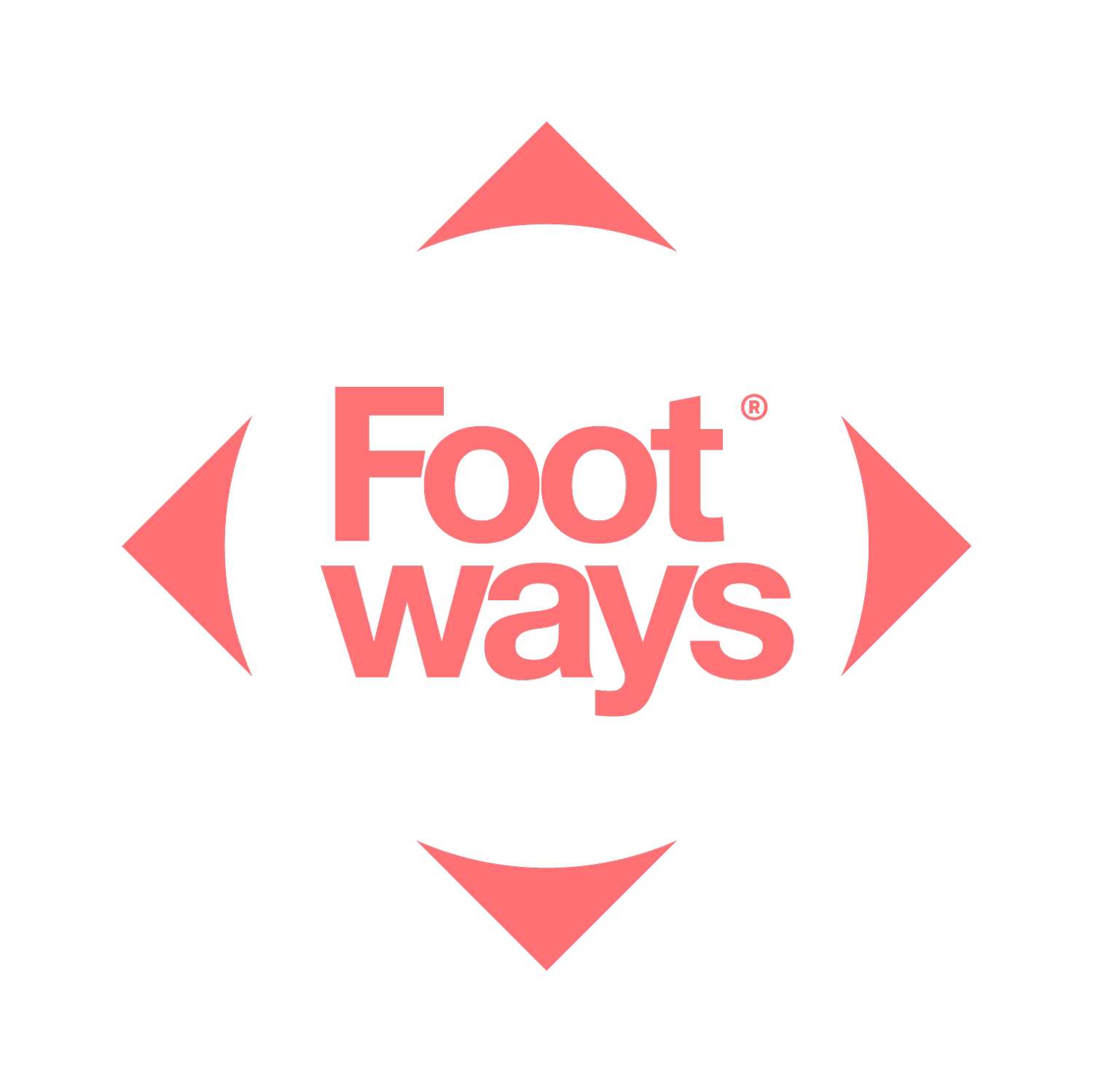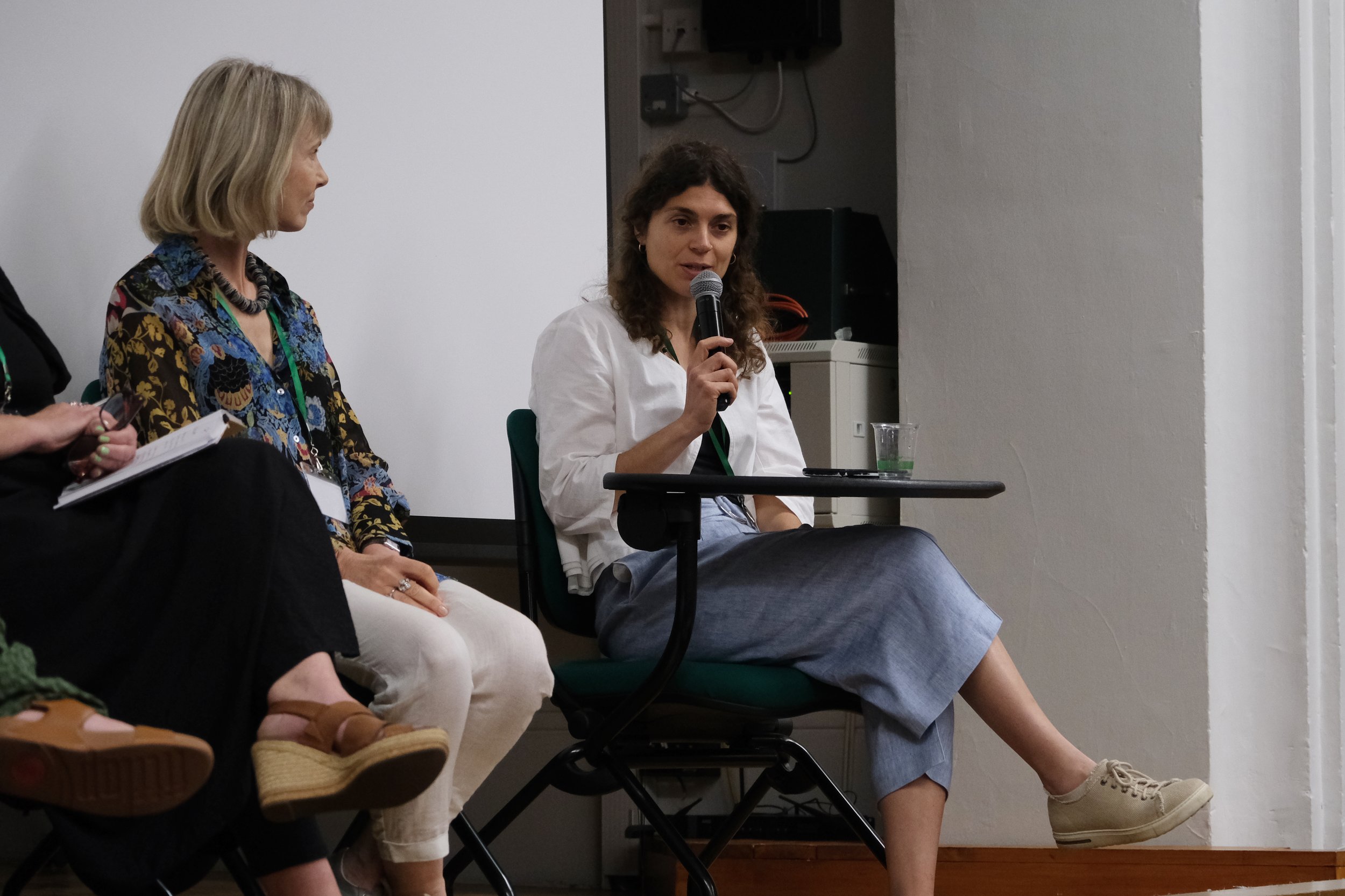How bold can we be?
Professor Shane O’Mara in conversation with University of Westminster’s Tom Cohen
Earlier this month, New Perspectives on Walking and Wheeling in Cities kicked off the London Walking Festival with a one-day conference at the University of Westminster.
The event brought together a wide range of voices – scientists, councillors, campaigners, urban designers, planners, writers and photographers – each offering a unique angle on how walking could (and should) reshape society and cities.
Movement and the mind
Professor Shane O’Mara’s keynote set the tone. Drawing on neuroscience, evolutionary biology, and psychology, he explored the profound links between movement and mental function. As any walker knows, walking often sparks creativity – and O’Mara explained why.
When we walk, central pattern generators in the spinal cord keep us moving rhythmically, which activates brain regions like the hippocampus. This rhythmic motion helps bring subconscious ideas to the surface—making walking a powerful aid for creativity.
“Walking is more than transport – it affects how we think,” O’Mara said.
But how do we ensure more people benefit from this? O’Mara presented data showing vast differences in walking rates across countries: in Japan, compact design and public transport encourage walking; in Saudi Arabia, poor pedestrian infrastructure discourages it.
“The problem isn't people—it’s our environments,” he argued.
Blaming individuals for inactivity misses the point. We must design societies where movement is easy, safe, and accessible for all ages and abilities.
“Our towns and cities need to ensure ‘individual-centred’ movement is at the core of urban planning – allowing the full participation of all members of our society in the fullness of our urban lives.”
There’s much more detail and inspiration on Shane O’Mara’s excellent blog, and in his book In Praise of Walking: The new science of how we walk and why it’s good for us.
The joy of interesting streets
Annabel Streets, author and walking advocate, explored the nuanced emotional and sensory impact of our built environments. Her reflections echoed themes from Footways’ own work: that walking thrives not just in green spaces, but also in streets full of detail, surprise, and charm – where interesting buildings, courtyards, squares, and everyday quirks enrich the experience.
She cited research showing that historical urban environments had even stronger soothing effects than green spaces, as measured by brain wave and skin conductance monitoring.
“Certain urban environments – like historic districts – can have even greater positive impacts than nature.”
And her books: The Walking Cure and 52 Ways to Walk
Beyond the “ped shed”
Dr Farzaneh Bahrami, Assistant Professor in Urban Design and Mobility at the University of Groningen urged us to abandon conventional walking ambitions – a 20-minute daily walk, or a five-minute catchment area – and instead embrace the power of longer journeys in everyday life. Her research in to Eextended walks, showed they deliver autonomy, stress relief and even a form of meditation, blurring the line between utility and leisure. To illustrate, she shared a research participant’s story:
“Probably my favourite thing about netball is walking to netball.”
Wheeling and walking in response to environmental changes
Dr Ersilia Verlinghieri gives her presentation on improving accessibility
Dr Ersilia Verlinghieri of the University of Westminster’s Active Travel Academy spoke about work done that has tracked the movements of disabled people before and after the implementation of measures including continuous footways and low-traffic neighbourhoods (LTNs). Camera footage shows a user of a mobility scooter riding in the carriageway on Stoke Newington Church Street before continuous footways are installed. Once a smooth route is available on the pavement, they switch. Someone walking with a stick is very wary about crossing the road before an LTN goes in; the same person, filmed after implementation, is visibly much more relaxed.
More information about the research is available here.
Walking as provocation
Jack Cornish, Director of England at the Ramblers shared his 15-year journey to walk every street in London. He described it as a kind of provocation—a challenge to himself and to others to experience the city in its fullest, to push beyond habitual routes and into unknown territory.
“It’s a provocation to explore more deeply. A reminder that walking is a way to truly know a city.”
Matthew Beaumont, Professor of English Literature at University College London, offered a powerful reflection through the lens of the French-Caribbean psychologist Frantz Fanon’s work, examining how race, gender, and class shape the way people move through cities. For example, how women might shift from ‘slinking’ to ‘striding’ through public space, or confidently occupying it.
Beaumont has written a series of books with walking as a theme:
The Walker: On Finding and Losing Oneself in the Modern City (2020)
How We Walk: Frantz Fanon and the Politics of the Body (2024)
Walking as solution
Cat Woodhead, the new CEO of Living Streets, spoke passionately about walking as a solution to some of society’s most pressing challenges such as inactivity, pollution and loneliness. She also presented findings from Living Streets’ recent policy reports.
Did you know:
1 in 3 over-75s avoid walking because of uneven pavements (Pedestrian Slips, Trips & Falls, Living Streets, 2023)
Pedestrians from deprived ethnic minority backgrounds are more than three times more likely to be involved in road casualties than white pedestrians in non-deprived areas? (Road traffic and injury risk in ethnic minority populations, Living Streets and Agilysis, 2021)
People who walk or wheel to do their shopping spend more money and pedestrianised high streets see bigger sales (The Pedestrian Pound (3rd Edition), Living Streets, 2024)
How bold can we be?
The afternoon session asked politicians and thinkers how bold can we be in designing cities for people.
Caroline Russell, London Assembly Member, was blunt: even the most basic pedestrian infrastructure remains patchy. She reminded the audience that 261 of London’s signal-controlled junctions still lack any pedestrian phase on their arms, forcing pedestrians – especially children, older and disabled people – to wait or risk unsafe crossings
Adam Harrison, Cabinet Member for Camden Council, had a great story to tell. Camden takes walking very seriously as a mode of transport. He outlined work the Council has done in the past – e.g. the West End Project; work it is doing now - e.g. the pedestrianisation of Camden High Street; and work it is planning – e.g. the Holborn Liveable Neighbourhood project.
Andrew Gilligan, former Cycling and Walking Commissioner for London, minced no words: “My two most hated words in planning? ‘Public realm.’” His point? Beautifying streets means nothing if traffic is not meaningfully reduced or removed.
Rachel Aldred pointed us to the research, and the amazing finding from the introduction of the Mini-Hollands (LTNs) in Waltham Forest: they had been expected to be of most benefit to cyclists but the increased time spent walking was most striking.
Much of the discussion revolved around the need to reduce the amount of motor traffic: road pricing and LTNs are the key tools.
Policy matters
The conference was closed by Christina Calderato, Head of Transport Strategy and Planning at Transport for London. She showed how central walking is to the achievement of a raft of the Mayor’s aims for London, in terms of sustainability, Vision Zero, physical activity, and told us that he remains committed to tackling health and environmental inequalities.
She reminded us of the Mayor’s vision that London should be the world’s most walkable city, but that we’d have to work together to achieve it. We’ll drink to that!
What’s next?
Walking is not just a means of transport. It is a right, a joy, and a key to building healthier, more inclusive cities. Events like New Perspectives on Walking and Wheeling in Cities remind us of the deep connections between movement, space, equity, and wellbeing.
Don’t miss:
📅 Tuesday 27 May | 5-7pm at Camden Collective | Join Footways on a tour through Camden’s rich industrial past with the @Camdengreenloop
📅 Tuesday, 3 June | Living Streets UK Walking Summit 2025 | Bristol & Online | https://www.livingstreets.org.uk/get-involved/uk-walking-summit/
Credit
The conference was organised by the Sustainable Cities and the Urban Environment Research Community at the University of Westminster, in association with the Active Travel Academy and Footways.


